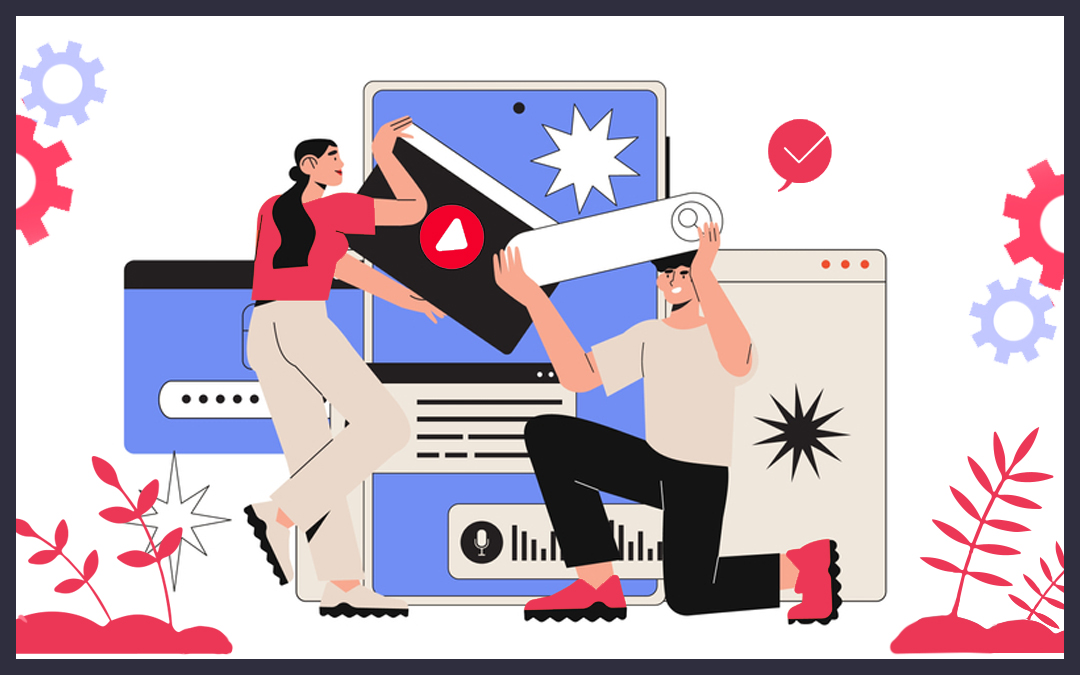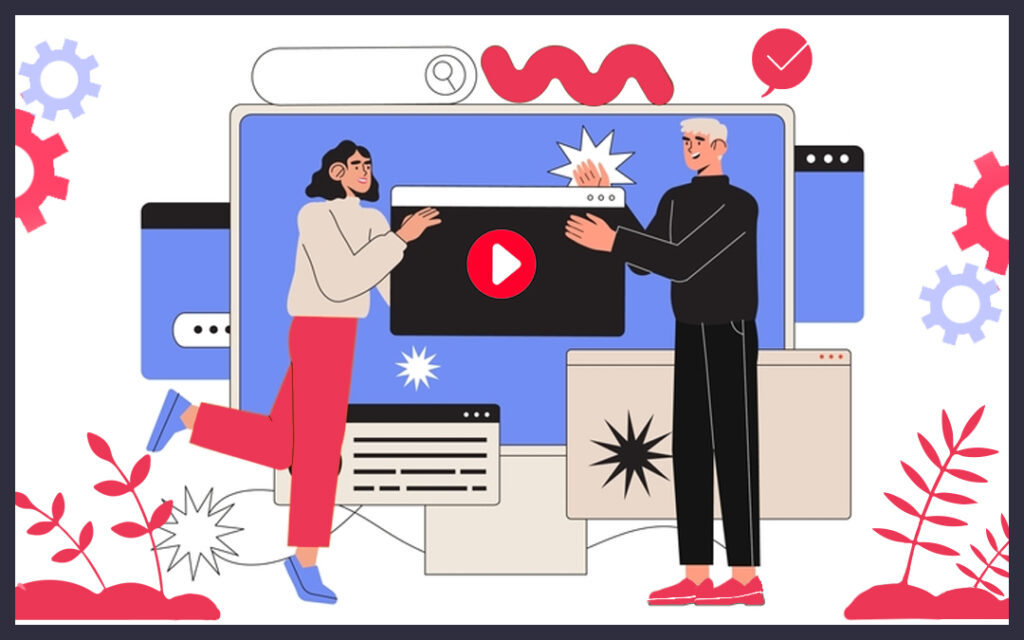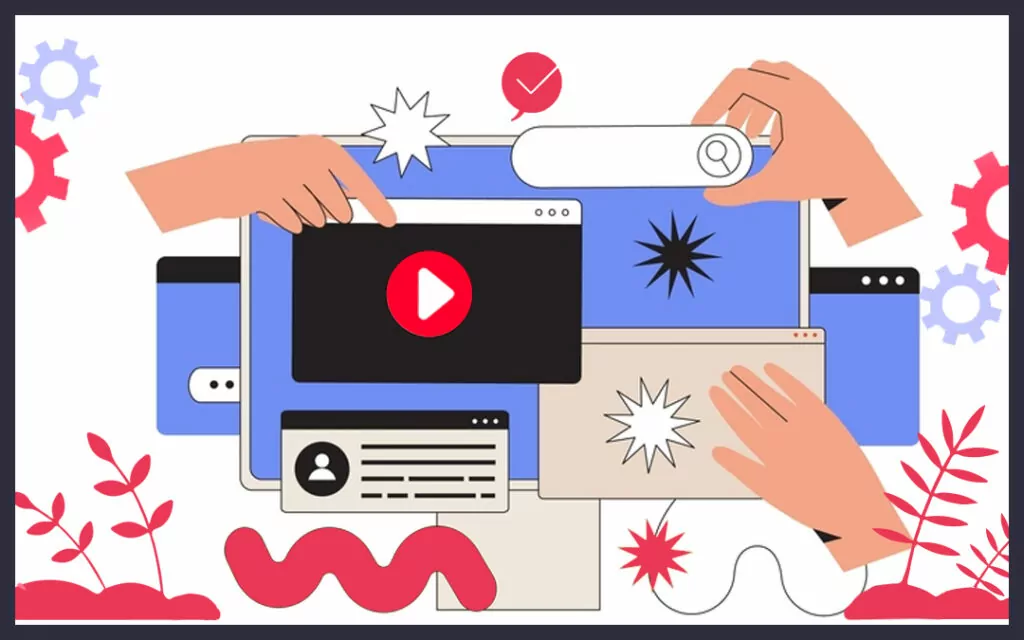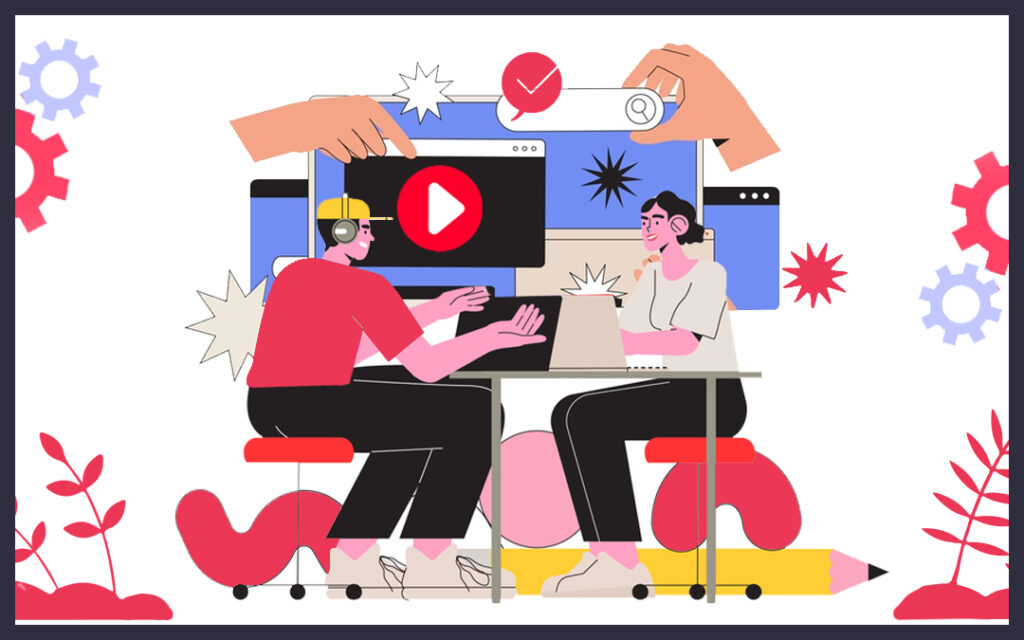[Updated on September 14, 2023]
Looking to skyrocket your visibility on YouTube? In 2023, cracking the code of the YouTube algorithm is absolutely essential. With a staggering 1 billion users worldwide and a whopping 500 hours of content uploaded every minute, the competition for attention is fierce.
But fear not! In this article, we’ll reveal the inner workings of the algorithm and share actionable strategies to optimize your content. By mastering the algorithm, you’ll unlock the potential for exponential channel growth and audience engagement.
So, let’s dive in and conquer the YouTube algorithm!
The Evolution of the YouTube Algorithm
The YouTube algorithm has undergone significant changes over the years. Initially, it focused on recommending videos with the most views or clicks. However, in 2012, it shifted its focus to prioritize watch time, as it became clear that viewers were more engaged with longer videos.
The algorithm also takes into account factors like thumbnail quality, viewer engagement, and video ranking. YouTube analytics play a crucial role in understanding your video’s performance and audience behavior.
Factors Considered by the YouTube Algorithm
The YouTube algorithm takes into account these factors when determining which videos to recommend and prioritize. While the exact details of the algorithm are not publicly disclosed, here are some key factors that are known to influence it:
- Watch Time
This is a crucial metric. The algorithm considers how much time users spend watching a video. Videos that keep viewers engaged and watching for longer are favored.
- Click-Through Rate (CTR)
CTR measures how often users click on a video after seeing it in their recommendations. A higher CTR indicates that the video’s thumbnail and title are compelling.
- User Engagement
User engagement includes likes, comments, shares, and subscribers gained from a video. Videos that generate more engagement are more likely to be recommended.
- Video Quality
High-definition videos with good production quality are more likely to be promoted by the algorithm.
- Keyword Relevance
YouTube analyzes video titles, descriptions, and tags to understand the content. Relevant keywords play a significant role in search and recommendation.
- Viewer History
The algorithm considers a user’s watch history to recommend content that aligns with their interests.
- Session Time
It evaluates how a video contributes to the overall time a user spends on YouTube. Videos that keep users on the platform longer are favored.
- Device and Location
The algorithm takes into account the device a user is using and their location to provide relevant recommendations.
- Trending and Freshness
Newly uploaded videos and trending content may get a boost in recommendations to keep content up-to-date and relevant.
- User Feedback
YouTube collects feedback from users through surveys, likes, dislikes, and more to refine its recommendations.
- Content Policy Compliance
Videos that violate YouTube’s content policies or guidelines are less likely to be recommended.
- Personalization
The algorithm personalizes recommendations based on a user’s past behavior and preferences, creating a unique experience for each user.
Importance of Compelling YouTube Content and Audience Engagement
To increase your chances of success on YouTube, focus on creating compelling content that captivates your audience and keeps them engaged throughout the video.
The YouTube algorithm prioritizes viewer satisfaction, so it’s crucial to create videos that not only attract a large number of views but also keep viewers interested and engaged.
One way to achieve this is by optimizing your YouTube content with attention-grabbing thumbnails, intriguing titles, and engaging descriptions.
Additionally, consider the use of YouTube Shorts, which have gained popularity and can help increase your reach on YouTube.
By incorporating these strategies into your YouTube marketing strategy, you can get more views, improve your video’s ranking, and increase your organic reach on the platform.
The YouTube Algorithm as a Growth Strategy
If you want to grow your YouTube channel, understanding how the YouTube algorithm works can be a powerful strategy for success. The algorithm plays a crucial role in determining which videos are recommended to users and how they rank in search results.
By optimizing your content according to the algorithm’s guidelines, you can increase your chances of getting your video in front of a larger audience. To beat the YouTube algorithm and increase your YouTube video views, focus on creating compelling and engaging videos that keep viewers watching.
Pay attention to factors like watch time, engagement, and video quality, as these are important metrics the algorithm considers. Additionally, optimize your video titles, descriptions, and tags to improve visibility in search results and the YouTube search engine.
YouTube Algorithm and Content Moderation Challenges
The YouTube algorithm and content moderation present a number of challenges for YouTube and its users. The recommendation system plays a crucial role in determining what videos are shown to individual users based on their viewing history and preferences. While this can enhance the user experience by suggesting relevant content, it also opens the door to potential problems.
In order to maintain a safe and appropriate platform, YouTube has guidelines in place that prohibit certain types of content such as hate speech, violence, and pornography. Content creators are responsible for adhering to these guidelines, as violating them can lead to strikes or the termination of their YouTube account.
However, enforcing these guidelines is not always a straightforward task. The vast amount of content uploaded to YouTube every minute makes it impossible for humans alone to review and moderate it all.
Instead, YouTube relies on a combination of automated systems and human moderators to identify and remove inappropriate content. While this approach helps to some extent, it is not foolproof.
The YouTube algorithm uses various signals to determine video rankings, including watch time, engagement, and viewer feedback. However, this algorithm is not perfect and can sometimes recommend controversial or misleading content, leading to potential harm or misinformation for the YouTube audience.
YouTube has been trying to improve its content moderation practices by making changes to its algorithm and increasing the number of human moderators. However, it is an ongoing challenge to strike the right balance between freedom of expression and maintaining a safe and trustworthy platform.
It is important for YouTube users to be aware of the algorithm’s limitations and manually curate their viewing experiences by actively choosing to watch videos that align with their values and interests. Additionally, users are encouraged to report any content that violates YouTube’s guidelines, as this helps in maintaining a healthier YouTube website for everyone.
Brief Introduction to the YouTube Algorithm and Its History
The YouTube algorithm is a complex system that determines which videos are recommended to users based on their browsing history and preferences. It was first introduced by YouTube in 2005 to help viewers discover new and interesting content on the platform. The algorithm takes into account various factors to decide which videos to promote, such as the view count and watch time of a video. The more views and longer watch time a video has, the more likely it is to be recommended to users.
This algorithm has greatly influenced the success of YouTube creators, as they rely on the algorithm to drive traffic to their channels and increase their viewership. The algorithm also plays a crucial role in determining the order of videos on the YouTube homepage and in the “suggested videos” section. This has made it even more important for creators to optimize their content to increase their chances of being recommended by the algorithm.
Factors such as the use of relevant keywords in the video title and description, engaging thumbnails, and appealing video content all contribute to a video’s chances of being recommended. The algorithm has undergone several updates and changes over the years to enhance the user experience and ensure the most relevant and engaging videos are surfaced.
YouTube regularly releases updates to the algorithm to adjust how it determines rankings and recommendations, taking into account user feedback and preferences. The combination of clicks and views, watch time, and user engagement all play a role in how the algorithm ranks videos and suggests them to users.
Factors and Categories of the YouTube Algorithm
When considering factors and categories of the YouTube algorithm, relevance, engagement, quality, and user search/watch history play a significant role in determining video recommendations. The algorithm works in analyzing these aspects to make the YouTube algorithm more effective in delivering personalized content to users.
Here are three important points to consider:
- Relevance
YouTube uses signals like video title, description, tags, and viewer interactions to determine the relevance of a video to a user’s search or interests.
- Engagement
The algorithm takes into account the level of engagement a video receives, such as likes, comments, shares, and watch time. Higher engagement indicates that the video is resonating with viewers.
- User Search/Watch History
YouTube considers a user’s search and watch history to provide personalized recommendations based on their interests and preferences.
Understanding these factors can help you optimize your content for the YouTube algorithm and increase your chances of reaching a wider audience.
YouTube Shorts Algorithm and Ranking Factors
To increase visibility and engagement for your YouTube Shorts, focus on creating visually appealing content with quick transitions and captivating effects. The YouTube algorithm for Shorts takes into account various ranking factors to determine the visibility and reach of your videos. By optimizing your content according to these factors, you can enhance your chances of success on the platform.
Here are some key ranking factors to consider when creating YouTube Shorts:
|
Ranking Factors |
Optimization Tips |
|
Video Quality |
Use high-resolution visuals and clear audio to enhance the overall quality of your Shorts. |
|
Relevance |
Choose trending topics or themes that align with your target audience’s interests. |
|
Engagement |
Encourage viewers to like, comment, and share your Shorts to increase engagement metrics. |
|
Thumbnail Appeal |
Create eye-catching and enticing thumbnails that make viewers want to click on your Shorts. |
|
Video Descriptions |
Write informative and keyword-rich descriptions for your Shorts to improve discoverability. |
YouTube Algorithm’s Impact on Video Rankings
Understanding how the YouTube algorithm impacts video rankings is crucial for increasing the visibility and reach of your content. According to YouTube, there are millions of videos uploaded to YouTube every day, making it essential to optimize your content for the algorithm.
The YouTube algorithm is a set of instructions that the platform uses to rank and recommend videos to users. It constantly changes and evolves, as YouTube announced that their algorithm has changed over time. The algorithm finds and looks at various factors like click-through rate, watch time, and user behavior to determine rankings.
Strategies to Beat the YouTube Algorithm
To beat the YouTube algorithm, focus on creating compelling content that captivates your audience and keeps them engaged throughout the video. Help YouTube by making your videos as long as possible, as YouTube aims to increase customer retention and keep users watching for as long as possible.
The video algorithm takes into account factors like click-through rate, watch time, and user behavior to determine rankings and recommendations. YouTube also looks at viewer satisfaction, so make sure to create content that resonates with your audience.
Take advantage of the features YouTube offers, such as tags, descriptions, and thumbnails, to optimize your videos for better visibility.
Organizing Content
When organizing your content on YouTube, creating playlists or series can attract viewers and increase views, improving your channel’s performance and credibility. By grouping related videos together, you provide a seamless viewing experience for your audience and make it easier for them to find content they’re interested in.
Creating playlists also encourages viewers to watch multiple videos in one sitting, increasing their engagement and watch time on your channel. Additionally, playlists and series help strengthen your position in the YouTube market by showcasing your expertise and niche content.
When starting a new YouTube channel, it’s essential to work with the YouTube algorithm and understand how it thinks. By organizing your content effectively, you can optimize your videos for better visibility and increase your chances of gaining subscribers on YouTube.
A/B Testing for Better Video Performance
Now let’s talk about A/B testing for better video performance.
As a content creator, you want to ensure that your videos are engaging and resonate with your audience. A/B testing can help you achieve that.
By conducting experiments on video elements like headlines, thumbnails, and descriptions, you can determine which format performs better in terms of click-through rate and watch time. This testing allows you to optimize your videos for maximum engagement and visibility.
You might be surprised to learn that the algorithm considers these factors when ranking and recommending videos. So, don’t underestimate the power of A/B testing in improving your video’s performance on YouTube.
It’s a valuable tool that many successful YouTube channels use to stay ahead in the game.
Leveraging YouTube Shorts for Visibility
Leveraging YouTube Shorts can greatly increase the visibility of your videos and help you stand out among other content creators. With the popularity of short-form videos on platforms like Instagram and TikTok, YouTube Shorts provides a unique opportunity to capture the attention of viewers in just a few seconds.
Here are three reasons why you should consider using YouTube Shorts to enhance your video content:
- Instant Impact
YouTube Shorts have a higher chance of going viral and capturing audience attention due to their short and snappy format. You can quickly engage viewers and leave a lasting impression.
- Increased Discoverability
Shorts have their own dedicated section on the YouTube app, making it easier for users to find and watch your content. This exposure can lead to more views, likes, and subscribers.
- Creative Expression
YouTube Shorts allows you to experiment with unique transitions, visual effects, and storytelling techniques. This creative freedom can help you showcase your talent and creativity in a concise and captivating manner.
Improving Organic Reach on YouTube
Boost your organic reach on YouTube by using accurate keywords in your video titles and descriptions. By incorporating relevant keywords in your video titles and descriptions, you increase the chances of your content showing up in search results. This helps attract viewers who are specifically searching for content like yours.
Transcribing your videos for better accessibility and SEO is another effective strategy. Transcribing your videos not only improves accessibility for viewers with hearing impairments, but it also helps search engines understand the content of your videos, improving your SEO.
Collaborating with other YouTubers is also beneficial for expanding your audience. By collaborating with other YouTubers, you can tap into their audience and gain exposure to a wider range of viewers.
Video Optimization for Better Engagement
To improve engagement with your videos, focus on creating visually appealing thumbnails that grab viewers’ attention and add compelling titles and descriptions that spark curiosity. These elements are crucial in attracting and captivating your audience, increasing their desire to click and watch your content.
Here are three key strategies to optimize your videos for better engagement:
- Use eye-catching thumbnails
Create visually striking thumbnails that stand out among the sea of videos. Use vibrant colors, clear images, and bold text to catch viewers’ eyes and entice them to click on your video.
- Craft compelling titles
Choose titles that are intriguing, descriptive, and relevant to your video content. A well-crafted title can pique viewers’ curiosity and make them eager to watch and learn more.
- Write captivating descriptions
Use your video description to provide a brief overview of what viewers can expect from your video. Include keywords, highlight key points, and add a call-to-action to encourage viewers to watch and engage with your content.
Frequently Asked Questions on How the YouTube Algorithm Works in 2023
Q: How does the YouTube algorithm work in 2023?
A: The YouTube algorithm works by analyzing various factors such as watch time, engagement, and relevance to determine how videos are ranked and recommended on the platform. It takes into account user preferences and behavior to provide personalized recommendations.
Q: How can I make the YouTube algorithm work in my favor as a YouTube creator?
A: To make the YouTube algorithm work in your favor, you need to focus on creating high-quality content that keeps viewers engaged. This includes optimizing your video titles, descriptions, and tags with relevant keywords, using attractive thumbnails, and encouraging likes, comments, and shares on your videos.
Q: How can I rank my videos higher in the YouTube algorithm?
A: To rank your videos higher in the YouTube algorithm, you should employ effective SEO techniques. This involves conducting keyword research, optimizing your video metadata, including relevant tags and descriptions, and promoting your videos through social media and other platforms to generate more views and engagement.
Q: Does the YouTube algorithm in 2023 prioritize certain types of videos?
A: Yes, the YouTube algorithm in 2023 does prioritize certain types of videos based on user preferences and behavior. It takes into consideration factors such as the viewer’s history, interests, and engagement with similar content to determine what videos are more likely to be recommended to them.
Q: How does the YouTube algorithm work with YouTube thumbnails?
A: The YouTube algorithm takes into account the thumbnail image when determining the relevance and attractiveness of a video. Using eye-catching and relevant thumbnails can increase the likelihood of your video being clicked on and recommended by the algorithm.
Q: Is the YouTube algorithm constantly changing?
A: Yes, the YouTube algorithm is constantly evolving and being updated. YouTube regularly makes changes to improve the user experience and ensure that the algorithm delivers the most relevant and engaging content to its users.
Q: How does the YouTube algorithm affect my video’s ranking?
A: The YouTube algorithm looks at various factors such as watch time, engagement, and overall viewer satisfaction to determine the ranking of your video in search results and recommendations. By optimizing these factors, you can increase the chances of your video ranking higher.
Q: What does the YouTube algorithm prioritize when ranking videos?
A: The YouTube algorithm prioritizes videos that have high watch time, engagement (likes, comments, shares), and viewer satisfaction. It aims to promote videos that are likely to keep viewers on the platform for longer and provide them with content they will enjoy.
Q: How can I optimize my videos for the YouTube algorithm in 2023?
A: To optimize your videos for the YouTube algorithm in 2023, you should focus on creating high-quality and engaging content, using relevant keywords in your video title, description, and tags, and creating visually appealing thumbnails. Encouraging viewer interaction and promoting your videos through various channels can also help improve their visibility.
Q: How does the YouTube algorithm affect YouTube analytics and traffic sources?
A: The YouTube algorithm plays a significant role in determining the traffic sources for your videos and how they appear in your YouTube analytics. By understanding how the algorithm works, you can analyze your traffic sources and make adjustments to your content strategy to drive more views and engagement.
Conclusion
So, there you have it, content creator!
In 2023, understanding and optimizing your content for the YouTube algorithm is key to maximizing your visibility and reach.
By mastering the inner workings of the algorithm, you can unlock exponential growth and audience engagement.
Remember, the YouTube algorithm is constantly evolving, so stay updated and adapt your strategies accordingly.
Now go out there and captivate your viewers with compelling content and audience engagement, and watch your YouTube channel soar to new heights.
Happy creating!




